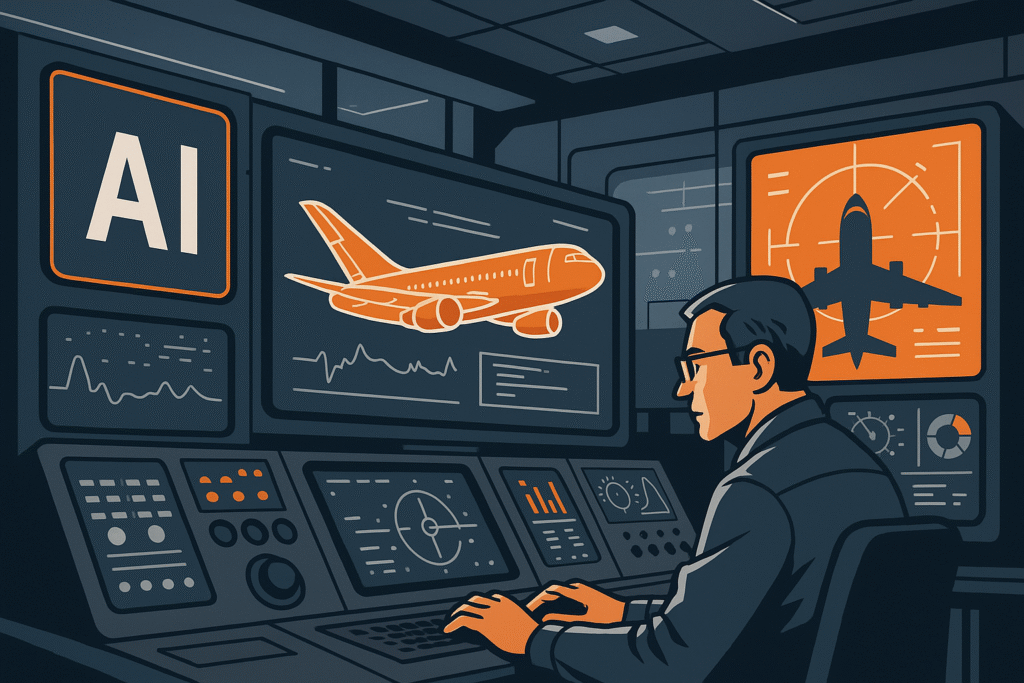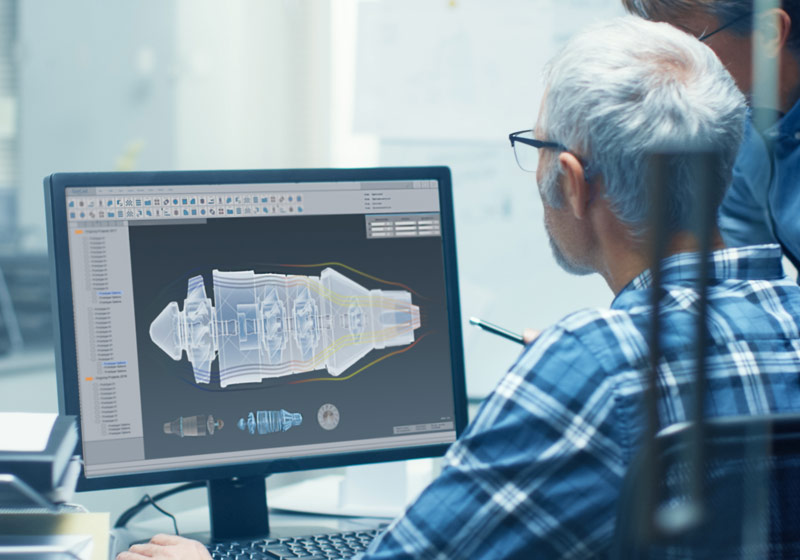Executive Summary
Artificial intelligence is redefining aerospace — from autonomous flight control to real-time mission decisions. But when lives depend on an algorithm’s judgment, trust becomes the ultimate performance metric.
The Department of Defense’s Responsible AI principles form the foundation for ensuring that AI systems in flight-critical and defense applications are safe, explainable, and verifiable.
At Netray, we translate those principles into practical architectures for AI reliability, compliance, and human oversight.
Key Insights:
- DoD’s 5 Responsible AI principles define the path to trustworthy aerospace AI
- Life-critical systems demand advanced verification, validation, and certification (VV&C)
- Explainable AI and human-machine teaming ensure confidence in decision-making
- Robust frameworks must cover edge cases and environmental extremes
The Trust Imperative in Aerospace AI
As AI shifts from assistive automation to autonomous decision-making, ensuring predictable, auditable behavior is vital. Traditional testing methods built for deterministic software struggle with non-deterministic AI — where models evolve, learn, and respond to new data in real time.
The challenge: How do we validate, verify, and certify AI when human lives depend on it?
DoD’s Responsible AI Principles in Aerospace Practice
- Responsible AI – Clear Ownership & Accountability
Every AI-enabled aerospace system must have defined ownership, documentation trails, and incident-response protocols.
Netray ensures that every AI decision — from a course correction to a sensor fusion output — can be traced back to its training data and validation process.
- Equitable AI – Consistency Across Conditions
Bias in aerospace AI isn’t about demographics — it’s operational.
AI must perform equally well across aircraft types, geographies, and conditions (from arctic flights to desert operations). Training diversity and scenario testing are key to ensuring mission reliability everywhere.
- Traceable AI – Explainability by Design
Traceability means every AI output is auditable. Explainable AI (XAI) methods allow engineers and pilots to see why the system made a certain decision — strengthening trust and certification readiness.
- Reliable AI – Tested Beyond Limits
Reliability extends beyond uptime. Aerospace AI must operate under high-G stress, electromagnetic interference, and hardware faults — with clear fallback behavior and safe degradation modes.
- Governable AI – Human Oversight Always in Control
Governable AI guarantees human authority. Netray’s frameworks build in override controls, human-AI collaboration interfaces, and real-time performance monitors that alert operators if AI behavior deviates from expected patterns.
Framework for Implementing Trustworthy Aerospace AI
Phase 1 – Requirements & Risk Assessment
Identify AI decision points, classify hazard severity, and design mitigation strategies early.
Phase 2 – Architecture for Verifiability
Adopt modular architectures combining AI with deterministic systems to support clear validation paths.
Phase 3 – Testing & Validation
Use multi-layer testing — from algorithmic verification to full-system simulation, including Hardware-in-the-Loop testing.
Phase 4 – Certification & Compliance
Engage with FAA, EASA, and DoD authorities early. Build performance-based evidence to comply with DO-178C, DO-254, and emerging AI-specific standards.
Case Study: AI-Enhanced Flight Management System
In collaboration with a major aerospace contractor, Netray developed an AI-driven flight management module with:
- Explainable route recommendations tied to confidence metrics
- Fail-safe fallback modes to certified systems during anomalies
- Validation across 10,000+ flight scenarios under diverse operational stress
Outcome: Reliable real-time optimization with complete human oversight.
Verification, Validation, and Certification (VV&C) Challenges
Traditional aerospace software assumes deterministic behavior — AI doesn’t.
To bridge this gap:
- Shift to evidence-based certification using behavioral performance
- Maintain continuous monitoring for real-time safety assurance
- Develop transparent audit trails for every AI update
Netray’s Responsible AI Methodology
Core Capabilities:
- Explainable AI Architecture – real-time interpretability for flight-critical decisions
- Full-Cycle VV&C Services – tailored for AI-enabled systems
- Regulatory Navigation – expertise across DoD, FAA, and EASA frameworks
Measuring Trust in Aerospace AI
Reliability ensures AI systems maintain consistent and safe performance even under extreme flight conditions, such as turbulence, temperature shifts, or system stress.
Explainability focuses on making AI decisions transparent and human-understandable, allowing engineers and pilots to know why the system acted a certain way.
Governability guarantees that human operators remain in full control, with override mechanisms and safety interlocks embedded in every critical process.
Traceability provides a complete audit trail—from the original data inputs to the final AI decision—ensuring accountability and compliance during reviews.
Ethical Compliance aligns all AI operations with the Department of Defense’s Responsible AI principles, reinforcing fairness, accountability, and mission integrity.
Conclusion: Building Trust Into Every Line of Code
Trustworthy AI is not an afterthought — it’s the foundation of aerospace innovation.
As systems grow more autonomous, organizations that embed Responsible AI principles into their design DNA will define the future of safe, reliable aerospace operations.
Ready to implement trusted AI in your life-critical systems?
Partner with Netray’s aerospace AI experts to develop verifiable, explainable, and compliant solutions aligned with DoD’s Responsible AI framework.



